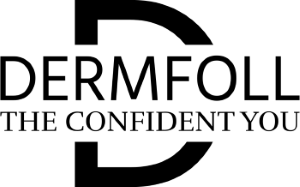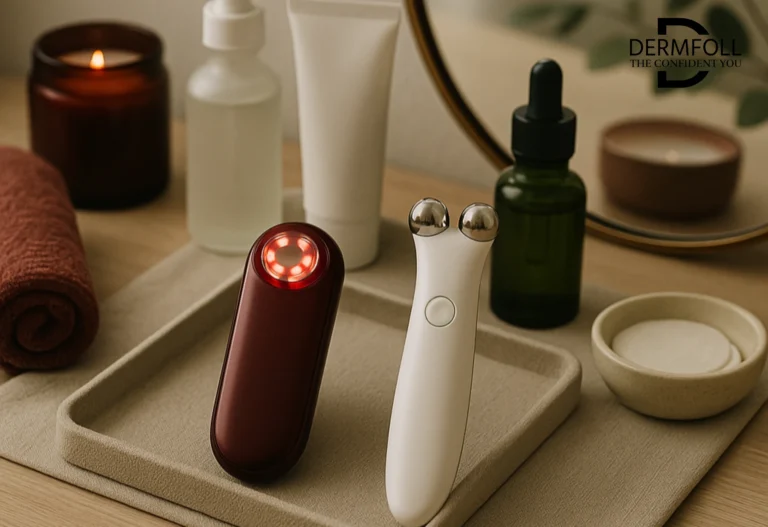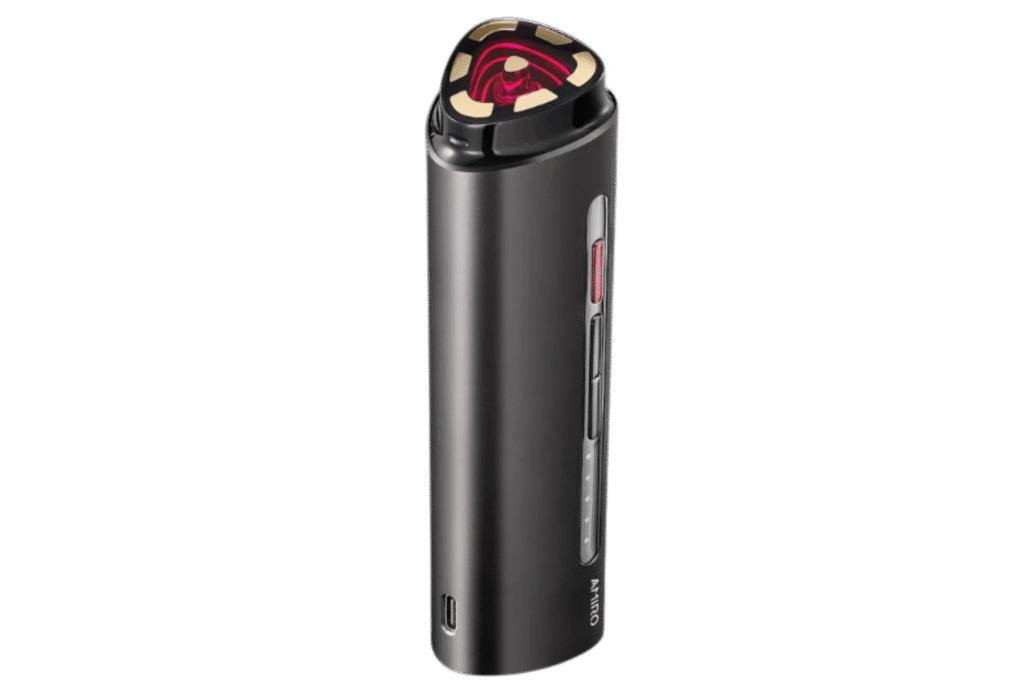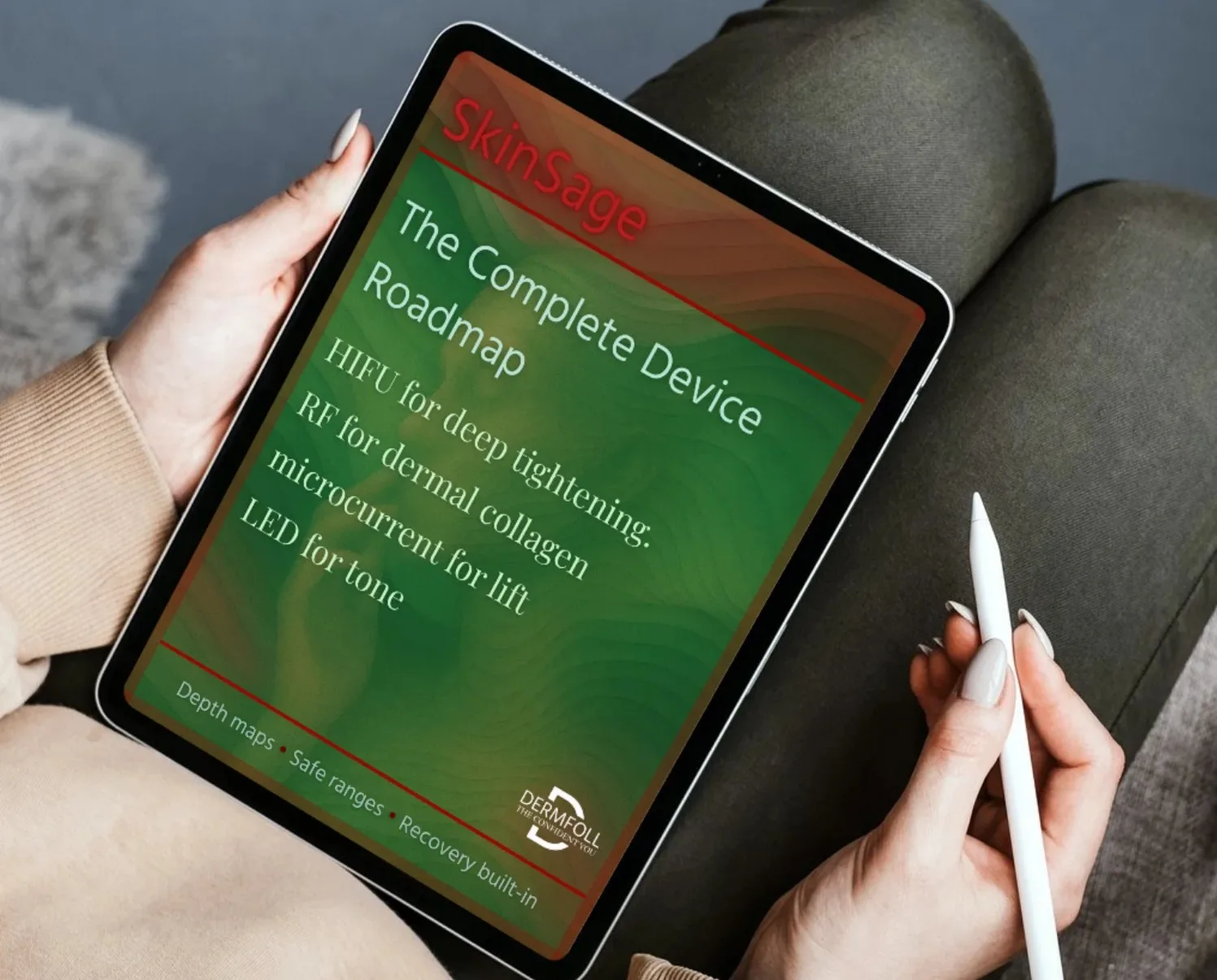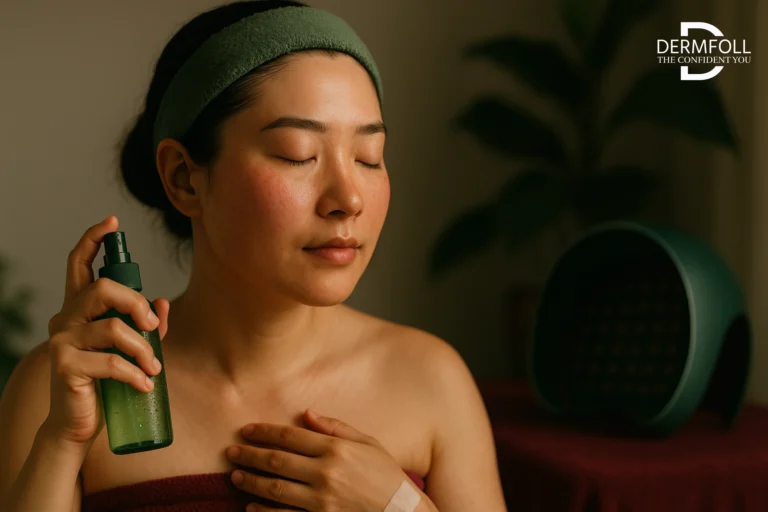Barrier Function and Moisture Retention: Who Disrupts It More?
If you’ve ever used a device and felt like your skin was suddenly tighter, but in a dry, itchy way, you’re probably dealing with something called transepidermal water loss, or TEWL for short.
It’s your skin’s way of saying, “Hey, I’m losing more moisture than I should.”
Let’s look at how facial electric therapy, specifically in a debate between microcurrent vs radiofrequency at home affects your skin’s barrier and its ability to stay hydrated.
Comparing Transepidermal Water Loss After A Session
your skin barrier is like a sponge wrapped in plastic wrap. When the wrap is intact (that’s your lipid barrier), moisture stays in.
But when treatments, especially heat-based ones, disrupt it, that moisture evaporates. That’s TEWL.
Studies show that radio frequency devices for home use, especially multipolar or superficial types, can temporarily increase TEWL by damaging the lipid matrix in the stratum corneum (the outermost layer of your skin).
While this is not a problem when it comes to normal and Resilient skin types, This can lead to dryness, flaking, or that tight, sensitive feeling in individuals with compromised skin.
On the other hand, microcurrent therapy doesn’t rely on heat and doesn’t pierce the skin barrier.
Instead, it gently stimulates skin cells using bio-identical currents.
No barrier breakdown.
In fact, some early data suggests microcurrent may even support moisture retention by enhancing cell metabolism without inflammatory stress.
One review put it clearly:
“Low-level electrical current maintains stratum corneum integrity and avoids post-treatment dehydration common with thermal-based energy devices.”
Ceramide-Depleted Skin and Its Response to Energy-Based Devices
Ceramides. They’re like the glue holding your skin barrier together.
If you’re low on them and many people with sensitive skin are, your barrier’s already compromised.
Now toss in a thermal treatment like radio frequency devices for home use, and boom: you’re asking a weakened wall to take a heat wave.
The result? More water loss, more irritation, and slower recovery.
Again, i want to emphasize thar Radiofrequency is not harmful to individuals with normal to resistant skin.
However, It is strongly recommended that you prep your skin before treatment.
Using barrier-repairing ingredients like ceramides, and niacinamide beforehand can dramatically reduce the risk of post-treatment discomfort.
🔶 Strengthen skin without barrier stress
AMIRO GlowBooster Microcurrent LED Facial Device
Enhances tone and hydration with low-level bioelectric stimulation safe for daily use.
AMIRO R1 PRO RF Skin Tightening Device
Firms deeper layers using precision RF heat to boost collagen and elasticity safely.
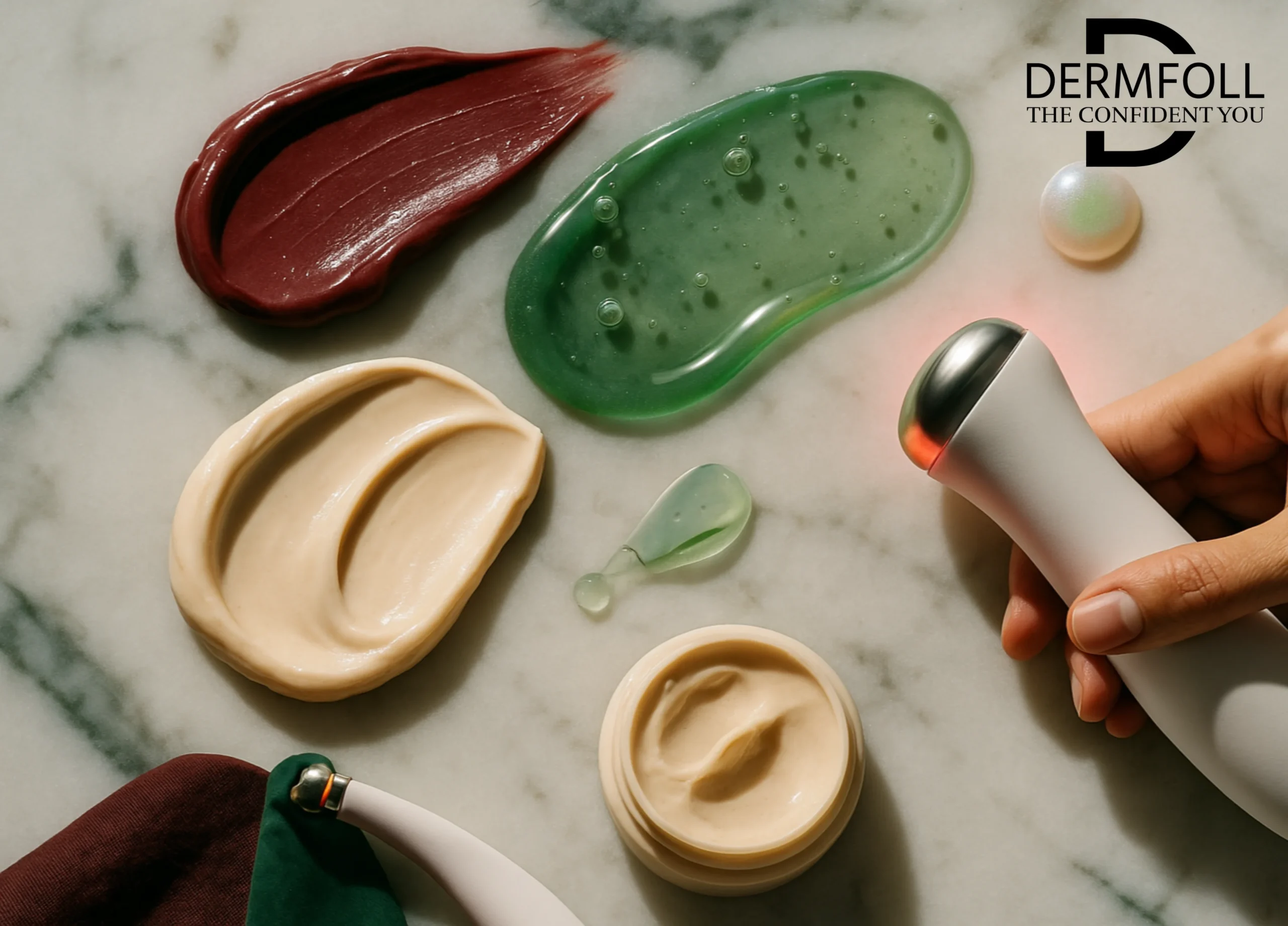
Post-Treatment Recovery: Downtime, Irritation, and Flare-Ups
No one likes a surprise breakout or sudden redness after a treatment.
Especially when the whole goal was to progress in your skin health.
Whether you’re using facial electric therapy at a clinic or For home use, knowing what your skin might do after is just as important as what happens during.
Redness, Edema, and Lingering Sensations: Typical Post-RF Events
Radiofrequency devices for home use are incredibly popular, and for good reason. They’re powerful tools for boosting collagen, tightening skin, and giving that long-term glow.
But they do come with a little baggage, especially if your skin is on the reactive side.
It’s pretty normal to experience some redness, swelling (edema), and a lingering warmth after using RF.
These effects usually last a few hours to a day.
But for sensitive or barrier-impaired skin, the reaction can stick around longer.
That said, here’s the key reassurance: RF is generally well-tolerated for people with healthy, non-sensitive skin.
In fact, many people find the warmth soothing, and it’s a small price to pay for tighter, smoother skin over time.
One clinical study noted:
“Post-RF erythema typically resolves within 24 hours, with high tolerability in individuals without pre-existing dermal sensitivity.”
So if your skin isn’t overly reactive, RF could be a great addition to your toolkit.
Microcurrent Recovery: What “No Downtime” Really Means
Now let’s talk microcurrent. This treatment is known for its minimal impact, and that’s because it doesn’t rely on heat or trigger inflammation.
After a microcurrent session, whether at a clinic or using a microcurrent device in an at home setup, most people feel nothing more than a light tingling or a bit of muscle fatigue.
No redness. No swelling. No drama.
It’s a gentle nudge to your skin, not a full-on challenge.
For sensitive or rosacea-prone skin, this is where facial electric therapy like microcurrent shines.
You can use it more frequently, recover almost instantly, and still see gradual tightening and toning results.
So if your skin doesn’t always play nice with heat or stimulation, microcurrent may be the more forgiving partner.
| Skin Type | Modality | Immediate Effects (0–2 hours) | Short-Term (1–2 days) | Long-Term Recovery (3–7 days) | Overall Tolerability |
|---|---|---|---|---|---|
| Normal Skin | Radiofrequency | Mild warmth, redness, slight swelling | Erythema usually resolves within 24 hrs | Full recovery with no barrier damage | Well tolerated in most cases |
| Microcurrent | Mild tingling, no redness | None | No downtime or visible irritation | Very well tolerated | |
| Sensitive Skin | Radiofrequency | Warmth, moderate redness, stinging possible | Redness and inflammation may persist up to 48–72 hrs | Increased TEWL, potential barrier disruption | Use with caution; barrier prep advised |
| Microcurrent | Light pulsing sensation, well-tolerated | No irritation, skin feels normal | No residual effects; suitable for regular use | Highly suitable for sensitive types |
🔶 Smart rejuvenation for sensitive and resilient skin
AMIRO GlowBooster Microcurrent LED Facial Device
Supports ATP and circulation to lift and smooth without post-treatment dryness.
AMIRO R1 PRO RF Skin Tightening Device
Uses controlled dermal warmth to tighten contours and refine texture long-term.
CONCLUSION
By now, you’ve probably realized that it’s not just about choosing the most high-tech tool on the shelf, it’s about choosing what your skin can actually tolerate and thrive with.
Here’s what we’ve uncovered:
- Microcurrent offers a gentle, non-invasive route to toning and collagen support, especially beneficial for those with reactive or dry skin.
- Radiofrequency devices for home use are powerful and effective, particularly for those with normal to resilient skin types, but they may increase transepidermal water loss or cause inflammation in more sensitive users.
- Understanding your skin’s barrier function, especially when it’s ceramide-depleted or moisture-compromised, is crucial when navigating facial electric therapy.
- Post-treatment recovery looks different for everyone, microcurrent vs radiofrequency at home isn’t a one-size-fits-all conversation.
With the right prep, support, and realistic expectations, both options can be safe and effective in their own way. It’s not about which one is better, it’s about which one is better for you.
So, whether you’re just starting out or looking to fine-tune your current routine, your skin will thank you for taking the time to understand what it really needs.
Curious how sensitive skin really responds to these tools? Our deep-dive on microcurrent device vs radio frequency breaks it down, barrier risks, inflammation triggers, and who should use what.
